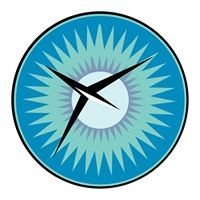Call for projects organizer
The National Institute of Aerospace (NIA)
United States, 1 calls for projects, 0 reviews, 0 comments
United States, 1 calls for projects, 0 reviews, 0 comments
NIA was formed by a consortium of leading research universities. Members include: Georgia Tech, Hampton University, North Carolina A&T State University, North Carolina State University, the University of Maryland, the University of Virginia, Virginia Tech, Old Dominion University, the College of William & Mary and the AIAA Foundation.
Description
BASIC CHALLENGEThe BIG Idea Challenge seeks new concepts for the design, installation, and sustainable operation of a large solar power system on the surface of Mars. The design aspects should consider lightweight structures, compact stowage, and high PV efficiency. The installation aspects should consider lander integration, robust deployment/retraction mechanisms, and fast/reliable deployment. The sustainable operation aspects should consider array performance under varying Mars environmental conditions including solar flux changes due to daily sun angle, season, and landing site latitude as well as impacts of extended dust storms on array power output. A key objective is to identify practical methods to prevent dust accumulation on the array surface or methods to remove dust once it has collected. These solar array systems are expected to supply reliable electric power for multiple crew campaigns that may span 10 years or more. Successful proposals will include appropriate levels of engineering design and power system analysis to validate the concept.
SPECIFIC GUIDELINES
The 2018 BIG Idea Challenge seeks novel concepts that emphasize innovative mechanical design, low mass and high efficiency, with viable operational approaches that assure sustained power generation on the Mars surface over the Martian year and during extended dust storms. Since the cargo landers will have limited battery power after touchdown, the solar arrays must be deployed and producing power soon after landing. The deployment analysis should include estimates of required power and the time duration for the array deployment. If solar tracking is proposed, arguments should be provided to justify why this approach is superior to fixed solar arrays based on performance, cost, and risk. Of special interest are modular array designs that are self-supporting in 1-g and can be autonomously deployed, and optionally retracted, relocated, and interfaced with other power sources on the Mars surface. The overall Concept of Operations (ConOps) should be clearly described including all design assumptions.
CONSTRAINTS
NASA has developed a preliminary set of design guidelines for autonomously deployed Mars solar arrays that could be delivered on a single cargo lander, as follows:
- At least 1000 m2 total PV cell area per lander.
- Less than 1500 kg total array mass including all mechanical and electrical components and less than 10 m3 total launch volume.
- Launch Loads of 5 g axial, 2 g lateral, and 145 dB Overall Sound Pressure Level (OASPL).
- Up to 50 m/s Mars surface winds. Ideally greater than 1-g deployed strength to allow unconstrained Earth deployment qualification.
- Deployment/retraction at -50 deg C on terrain with up to 0.5 m obstacles and 15 deg slopes.
- Operating height greater than 0.5 m to avoid wind-blown sand collection.
- Positive power output within 1 Martian Sol of landing.
- Integrated dust mitigation and abatement methods. (Dust accumulation is the #1 design risk issue for sustained PV power production on Mars.)
- Tolerant of daily thermal cycling from -100 C to 25 C over a lifetime of 10 years.
For all BIG Idea Projects, attention should be given to the following:
- Innovative Design
- Creative operational approaches
- Use of technologies that could be ready for use on Mars in the early 2030s
- Effective packaging for launch and Mars landing
- Viable lander-based deployment methods
- Reliable, long-term power generation in the Mars environment
Rewards
Prize
$6 000Teams presenting at the 2018 BIG Idea Forum will receive up to a $6,000 stipend to facilitate full participation in the Forum.
The students in the top overall winning team will be awarded with offers for paid winning NASA internship offers.
Timeline
Launch of the call for projects
Submission ends
No publication yet


